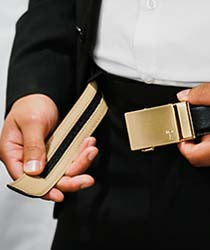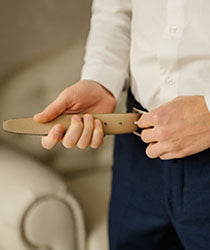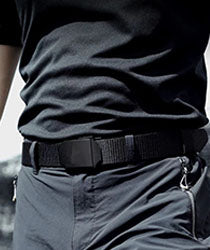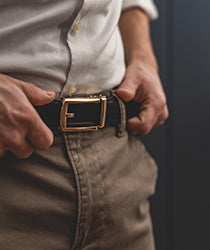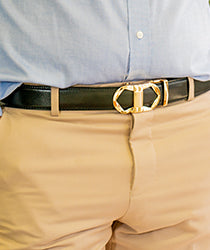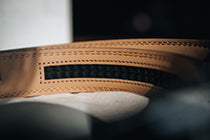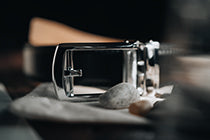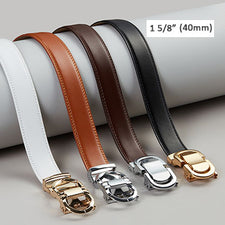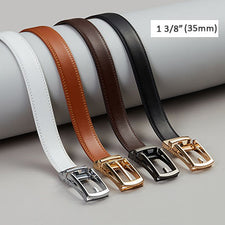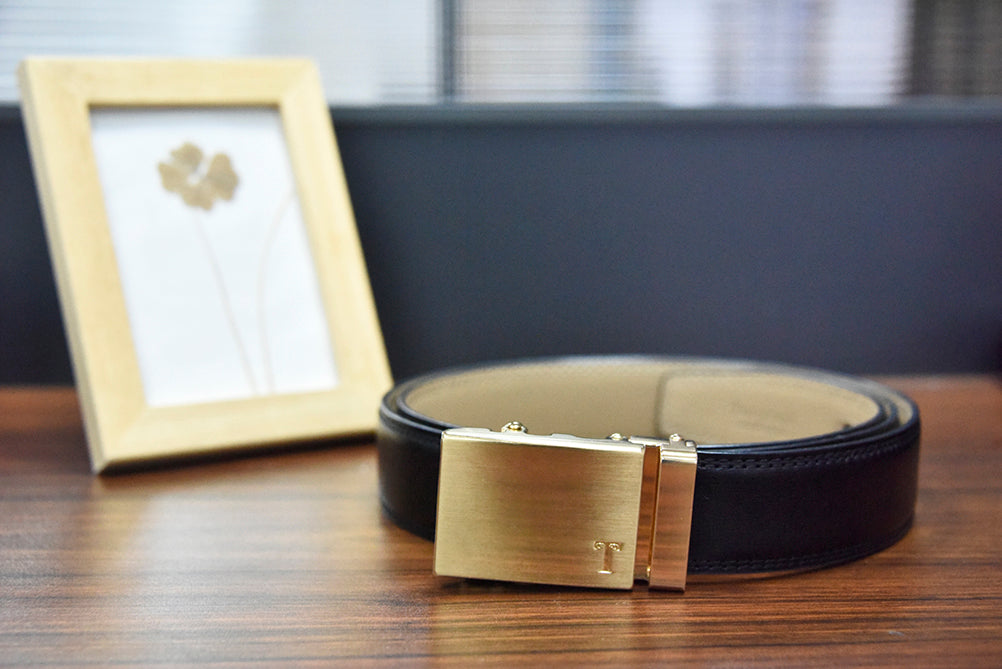 We've talked about how to pick a belt that's right for you several times. The guidelines for choosing accessories are always based on different scenarios, buying groups, and wearing purposes.
We've talked about how to pick a belt that's right for you several times. The guidelines for choosing accessories are always based on different scenarios, buying groups, and wearing purposes.
Belts are commonly regarded as an immediate necessity. If your pants are too big, you will need a belt to fix them. Otherwise, they will suddenly fall. Right? That’s something no one wants to happen. Alternatively, someone may prefer to wear tighter pants. Still, the activity will cause the pants to slip down with a little more movement, making them unpleasant and unsightly.
Even though someone may think a belt is not useful to him, it is nonetheless a required item for everyone. The belt is now of increasing meaning in terms of aesthetics. Wearing a belt will make you look better. And many belts and leather buckles are available to accent and embellish the overall outfit. As we all know, the finer points of a well-dressed person are typically mirrored in the details. As a result, we’d like to advise our customers to seek the best belt they can afford within their budget. Make sure we don't lose track of the details.
Many people are confused about whether or not they need to purchase a high-quality leather belt. The type of leather used directly impacts the belt's durability. The leather quality affects the breathability, texture, and softness of different belts. In addition to improving the comfort and attractiveness of your clothing, a great belt will also make itself more resistant to bending.
In any case, the best way is to decide based on your budget and needs.
The cowhide material, in general, can balance the needs for good looks and practicality. It is the most widely used leather for men's belts.
The cowhide has a higher bending resistance than other leather since it is thicker. It can be cut into many layers and utilized after being tanned. The "initial layer of cowhide" is referred to as "cow leather." There is also a "second layer of cowhide" below. Both of them are arranged from outside to inside in order. That’s also how prices of belts vary depending on the quality and layer position.
We need to consider more than just the quality when it comes to leather. Most of the time, it's still essential to take a look at the grain of the belt. Lychee, plain, wrestle, small fine grain, glossy leather, and other designs have recently become popular. You're not far from discovering your ideal belt if you choose the proper grain!
Which is your favorite belt grain?
In addition, there is one more thing that I need to emphasize:
"Is this the belt I want?"
"Is it appropriate for me or not? "
"Is it capable of meeting all of my requirements?"
Please don’t bother to ask yourself these last three questions after selecting a decent leather and grain. The quest for quality is critical; after all, belts are consumable. We should stop putting too much effort into entangling those who purchase belts that can last longer.
Take a look at the criteria I provided below if you want to shop for belts with confidence as a point of reference when you're out shopping.
You can start by summarizing your dressing style because clothing and accessories are always a good match. Because clothing and accessories are always a good match. You can buy a belt made of "canvas" if you frequently wear casual clothes; if you frequently wear formal clothes and suits, you can get a belt made of "cow leather."
2. Age group
Your belt style is also tied to your age!
Examine the belt in your purchasing cart to discover if it is too outdated or frivolous for you. Younger individuals have a greater variety of styles to pick from.
3. Buckle style
Did you select the appropriate style of buckle? Is it consistent with your usage patterns? The buckle type mainly determines the style direction of the belt. Of course, the metal and leather must pass the line for the belt to be excellent. Examples are automatic buckles, double ring buckles, pin buckles, plate buckles, and slide mouth buckles.
Pay attention to the strap's width and this is straightforward to make the decision based on their figures. A narrower belt, for example, will be more appropriate for a slender figure.
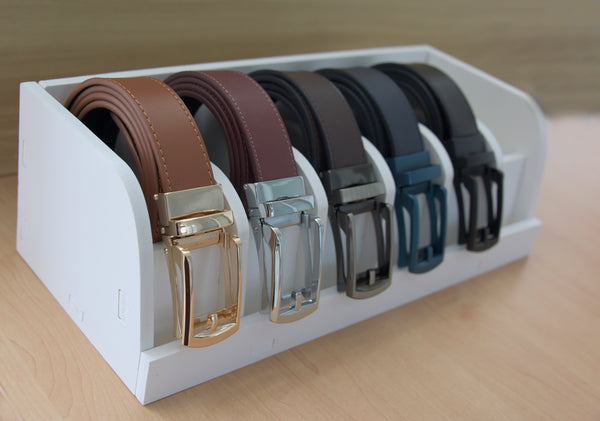
A perfect belt combines high-quality leather, a desirable grain, an appropriate size, superb craftsmanship, and a fine leather buckle! I believe you can get the best belt as long as you fulfill all of these steps.

